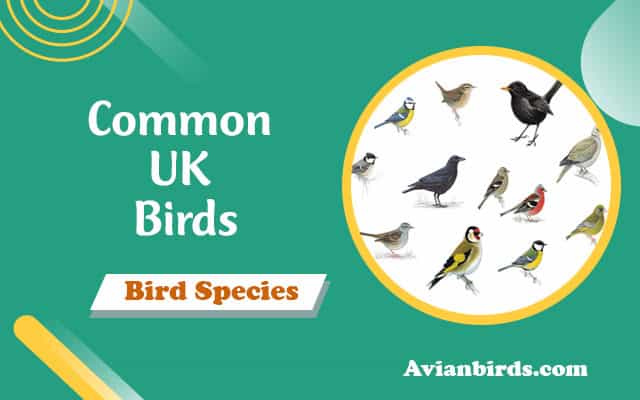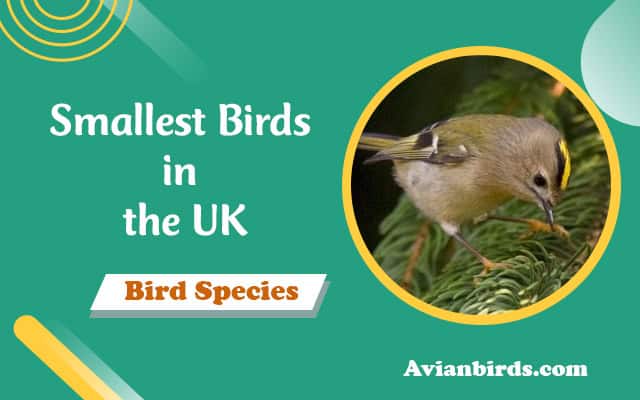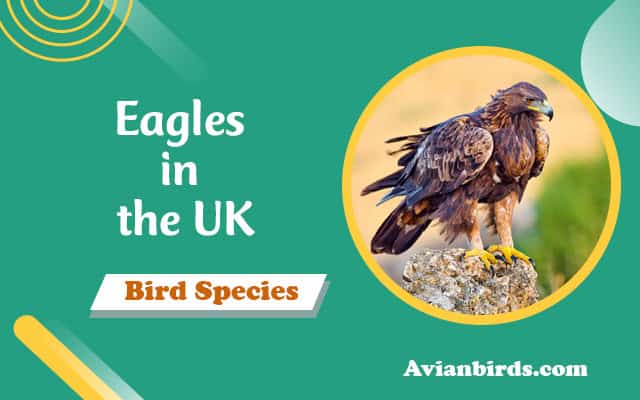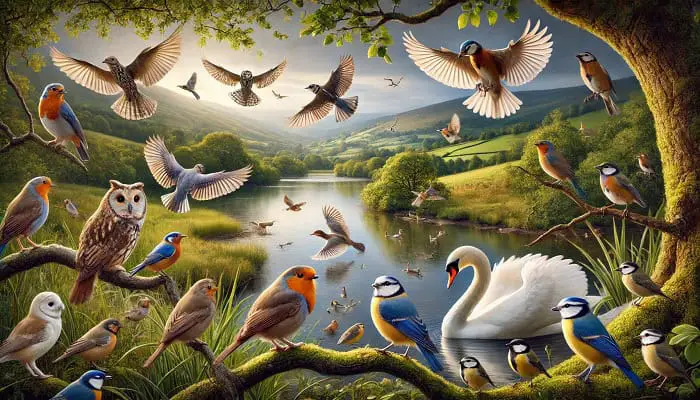10 Common UK Birds (ID Guide With Photos)
Did you know the House Sparrow’s population in England dropped by 70% from 1977 to 2016? This shows the big challenges common UK birds face. We need to know more and help protect them. In this guide, we’ll look at ten popular UK bird species. We’ll share tips to help you spot and enjoy the amazing birds of the UK.
Birdwatching in Britain lets us see the lives of these birds up close. From the Robin, loved by many, to the Starling, known for its social nature. We’ll learn about their looks and habits and how we can help them. Let’s start this fun journey into the world of birds together!
Do You Know How Many Common Bird Species Found In UK?
Birdwatching in Britain is loved by many. Over 634 bird species have been recorded in the UK. Around 200 common birds fly in our skies.
Every year, about three million people enjoy this hobby. They love watching the interesting behaviors of UK wild birds in different places.
Our country has many landscapes, from coasts to city gardens. This makes birdwatching exciting. Places like Skomer Island, known for puffins, and Aberystwyth for starling murmurations offer great views.
Knowing about bird conservation is key. We can make our gardens and parks bird-friendly. This helps both local and migratory birds.
By learning about birds, we appreciate nature more. We also enjoy watching and helping protect our feathered friends.
1. House Sparrow
The house sparrows are a very common birds in the UK. You can see them in cities and countryside. They have special features that help us know who they are and what they do in our world.
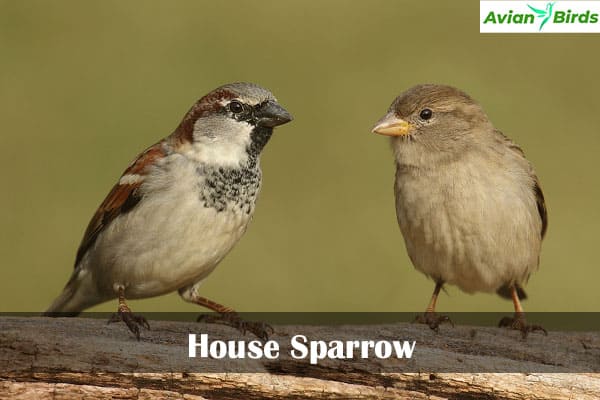
Identifying Features
Male house sparrows are about 16 cm (6.3 in) long. They have black bibs and brown and black feathers. Female sparrows are less colourful, without the males’ striking looks.
This shows how different British birds can be. They have different eye colours and sounds. House sparrows live in many places, including gardens, making them easy to spot.
Conservation Status
House sparrow numbers have dropped a lot, especially in cities. They are not yet endangered, but their numbers have fallen by 70% in England since 1977. Now, there are about 5.2 million pairs in Britain.
Things like losing homes, changing farms, and bird malaria have hurt their numbers. Helping them by feeding them in winter can help them breed better.
2. Starling
The Common Starling is a standout among UK birds. It has amazing colours and interesting social habits. These birds show green and purple shades in sunlight. Their bright feathers make them easy to spot in groups.
Starlings love to be together. They form big groups to find food and stay safe. This is why many people enjoy watching them.
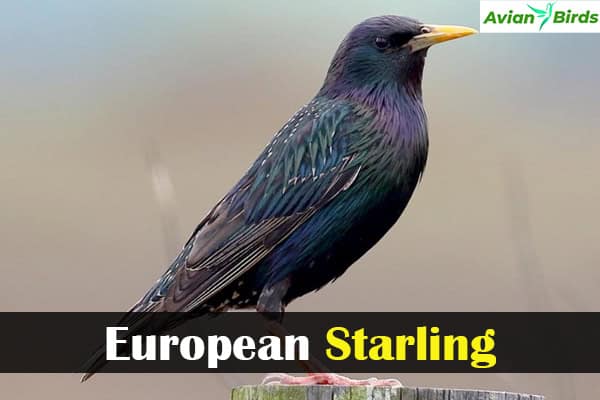
Social Behavior
Starlings have complex social lives. They fly together in huge numbers, creating stunning patterns in the sky. This is called murmuration, and it keeps predators away.
They also talk to each other in their own way. They use sounds to share news about food and danger. This helps them stay safe and find good places to eat.
Starlings are also very loyal. They stay with their mates for the whole breeding season. Also, They work together to raise their babies, sharing the job of caring for them.
They lay four to five blue eggs at a time. Starlings are not jealous or mean to their mates. This makes their homes peaceful places for their families.
We should all appreciate these birds more. But, the Common Starling is facing big challenges. We need to help protect these colorful and friendly birds.
3. Robin Common UK Birds
The robin is a favourite of the holiday season in the UK. It has a bright red chest and a brown body. This bird wins our hearts, especially at Christmas.
Let’s learn more about the robin’s life. We’ll find out how it eats and behaves. This makes it special among British birds.

Feeding Habits
Robins have interesting ways of finding food. They look for insects, seeds, and fruits. They like gardens and parks for hunting.
In the cold months, robins fluff out their feathers. This keeps them warm and helps them see better while searching for food.
Robins are more common in winter. Some birds come from colder places to the UK. They are good at finding food in different places. Here’s a table about their eating habits:
| Feeding Behavior | Preferred Food Sources | Seasonal Patterns |
|---|---|---|
| Foraging on the ground | Insects, seeds, fruits | More visible in winter |
| Puffing up plumage | Insects | During cold weather |
| Visiting gardens | Seeds from feeders | Year-round residents |
Robins are loved in nature and our holiday traditions. Their eating ways and cute actions make them popular. They add joy to our winter, whether on cards or in our gardens.
4. Coal Tit
The coal tit is a standout among UK garden birds. It’s small, just over 11 cm long, and weighs 8-10 grams. Its black cap, white neck, and grey body make it easy to spot.
In gardens, coal tits flit about, often in groups. They look for food to eat.
Coal tits love wooded areas, especially conifers. They visit garden nest boxes, making them easy to see. They store food like seeds and insects for later.
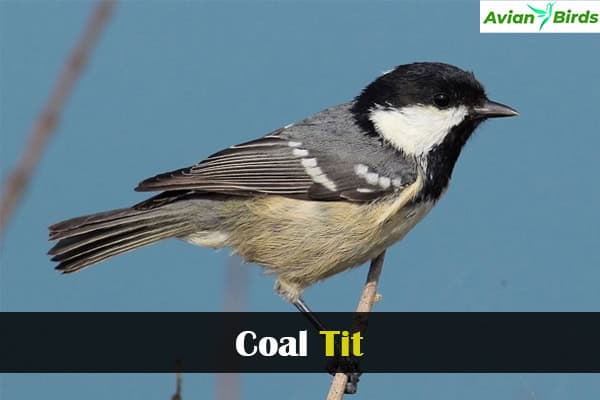
But, they sometimes forget where they hid it. This lets other animals find it too.
Coal tits lay 9-10 eggs at a time and have 1-2 broods a year. They live for about two years. Their numbers have stayed the same for a hundred years.
This stability is thanks to more non-native conifers, like Sitka Spruce. These trees are great for coal tits.
| Feature | Description |
|---|---|
| Size | Over 11 cm in length |
| Weight | 8-10 grams |
| Breeding | 9-10 eggs per clutch, 1-2 broods |
| Habitat | Wooded areas, prefers conifers |
| Life Span | Around 2 years |
| Conservation Status | Stable population |
Watching coal tits in gardens is both charming and fascinating. Their shy nature and unique eating habits make them a joy to see. They remind us of the rich wildlife in our gardens.
5. Long-Tailed Tit
The long-tailed tit is a beloved bird in the UK. It has a small body and a long tail. Its pink and white feathers make it a favourite among bird lovers.
We often see these birds in gardens and woodlands. They live in groups and play together. This makes them a delight to watch.

Their nests are special. They use spider silk to build them. These nests grow as the chicks get bigger. It’s amazing to see how they adapt.
Long-tailed tits add colour and life to our ecosystems. They are fun to watch as they forage together. They remind us of nature’s beauty.
6. Blue Tit
The blue tit is a colorful bird in UK gardens. It has bright blue and yellow feathers. These birds are fun to watch and help our gardens.
Knowing how they breed is key to keeping them around. This helps our gardens stay lively.
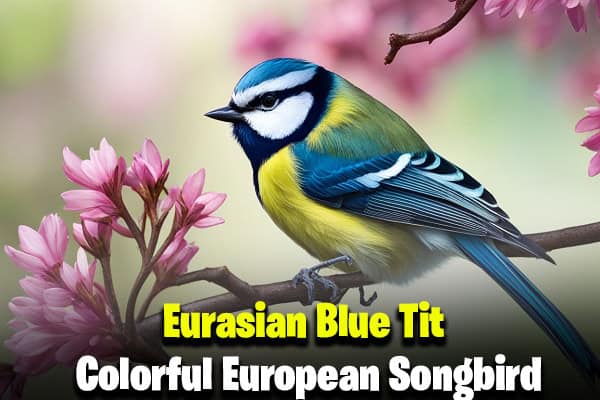
Breeding Patterns
In late spring, blue tits look for places to nest. They like small holes, so nest boxes are great for them. A female lays 7 to 13 eggs.
Incubation lasts about 12 to 16 days. During this time, they stay very close to where they were born.
By making our gardens welcoming, we help blue tits. They visit 98% of UK gardens in winter. This shows how adaptable and important they are.
Also, a family of blue tits can feed and raise many chicks. Just four or five adults can care for twenty or more young.
| Breeding Statistics | Details |
|---|---|
| Eggs Laid | 7 – 13 eggs |
| Incubation Period | 12 – 16 days |
| Nesting Preference | Small holes (including garden nest boxes) |
| Territorial Loyalty | Rarely moves beyond a few kilometers |
| Garden Visits | 98% of gardens receive visits in winter |
Blue tits add color and life to UK gardens. Protecting their homes and feeding them helps. This keeps our gardens diverse and lively.
7. Great Tit
The great tit is the biggest tit birds in the UK. It has a black head and a yellow belly with a black stripe. Over two million of these birds live in the UK, found in many places like parks and gardens.

Dietary Preferences
Great tits eat many things. They like insects, seeds, nuts, and more. In winter, they visit bird feeders to find food.
They lay seven to nine eggs in April or May. The female sits on the eggs alone. Both parents take care of the chicks. Studies show their beaks have grown longer, helping them find food in bird feeders.
Watching great tits in our gardens is amazing. They show us how to care for them. This makes our gardens better for all wildlife.
8. Marsh Tit
The marsh tit is a delightful yet elusive member of the British Birds family. They are not as common as other birds, but their charm makes them special. Marsh tits live in wetlands and deciduous woodlands, blending in perfectly.
They are often confused with coal tits because of their similar size and features. But, one key difference is their unique song. It sounds like a soft sneeze.
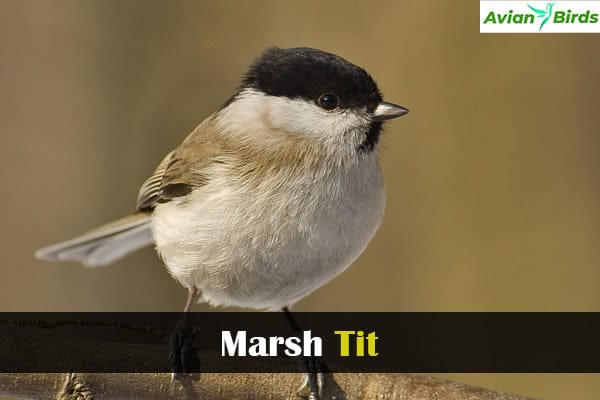
This song helps birdwatchers find these charming UK wild birds. Watching them flit among the branches is thrilling. It adds excitement to our birdwatching adventures.
The marsh tit’s population is declining, putting them on the red conservation list. This calls for urgent research and habitat protection. It shows we must protect our diverse bird life.
| Feature | Marsh Tit | Coal Tit |
|---|---|---|
| Size | Small | Small |
| Call | Sneeze-like “taah” | Loud “pitchoo” |
| Habitat | Wetlands, deciduous woodlands | Coniferous forests, mixed woodlands |
| Population Trend | Declining | Stable |
| Conservation Status | Red list | Green list |
9. Dunnock Common UK Birds
The dunnock, also known as the hedge sparrow, is a lovely bird in the UK. It moves quickly across the ground or searches in the bushes. Its greyish-brown colour helps it hide in gardens.
This bird is about the size of a house sparrow. It has interesting behaviours and habits. Birdwatchers find it very interesting.
Dunnocks usually stay alone or in pairs. They don’t like to feed in big groups. Instead, they hop on the ground for spiders and insects.
Their way of moving is like a mouse. This makes them even more charming. It shows how well they adapt to living on the ground.
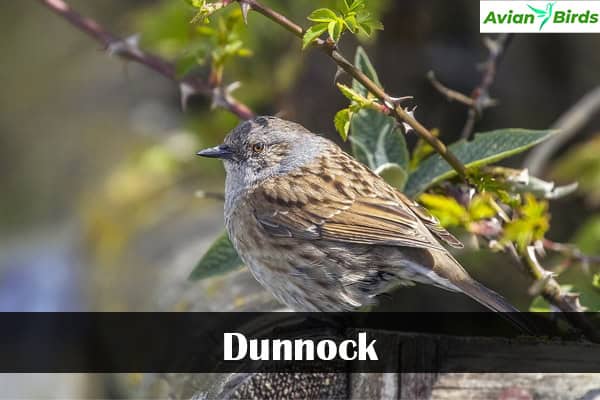
In the UK, there are about two million dunnock pairs. Their numbers have grown since the 1990s. But, they have lost a third since the 1970s.
Habitat loss, especially in woodlands and hedgerows, is a big reason. They build their nests in dense shrubs. Gardens are great for raising their young, with two to three broods a year.
Their songs are very distinctive. Males sing a loud, squeaky song. It sounds like a ‘peep.’ During breeding, males show off by flying and chasing each other.
Predators like sparrowhawks and cats are threats. They also face dangers from other predators. But, dunnocks are still common in many places.
Watching dunnocks makes birdwatching more exciting. It shows us the beauty of nature around us.
10. Wren
The wren is the smallest bird in UK gardens. It has a very loud song for its size. This tiny bird is about 9 to 10 cm long and weighs 7 to 12 grams. They love hiding in dense foliage while singing their songs.

Wrens are found in many gardens in the UK. They have a population of 8 to 11 million. Having them in our gardens makes it more lively and fun to watch.
- Plant dense shrubs and undergrowth to provide shelter.
- Install nest boxes to encourage breeding.
- Maintain a diverse ecosystem with native plants to attract insects, a vital food source for these birds.
By making a few changes, we can help wrens thrive in our gardens. This makes our gardens more interesting and fun to watch.
| Species | Population (Breeding Territories) | Weight Range (g) | Length (cm) |
|---|---|---|---|
| Wren | 8-11 million | 7-12 | 9-10 |
| Robin | 6.7 million | 16-22 | 12-14 |
| House Sparrow | 5.3 million | 24-38 | 14-15 |
Conclusion
We’ve looked at common UK birds and found their interesting traits and behaviours. Birds like the Wood Pigeon and Dunnock add beauty to Britain. This guide helped us spot ten birds and learn about their need for conservation.
Birdwatching in Britain is a fun way to connect with nature. It helps us support efforts to save these amazing birds. With millions of birds, like Blackbirds and Goldfinches, we feel a sense of duty to protect them.
This guide encourages us to enjoy birdwatching. It’s a hobby that lets us explore and appreciate nature. Seeing these birds reminds us of the need to protect them for future generations.
Read More 🐦Related Articles:
| Eagles in the UK |
| Smallest Birds in the UK |
| Black and White Birds in the UK |
| Types of Scavenger Birds |
| Types of Flamingo |
Frequently Asked Questions
Q1. What are the most common garden birds in the UK?
Common garden birds include robins, blue tits, great tits, house sparrows, and starlings.
Q2. How can I attract more birds to my garden?
Provide bird feeders, fresh water, native plants, and nesting boxes to create a welcoming environment.
Q3. What do robins eat, and how can I feed them?
Robins eat insects, worms, and berries. Offer them mealworms or specialized bird food in feeders or on the ground.
Q4. How do I identify a blue tit?
Blue tits are small with a blue cap, yellow belly, and greenish wings. They have a distinctive black stripe through their eyes.
Q5. Why are starlings often seen in large flocks?
Starlings flock for protection against predators, social interaction, and to find food more efficiently.
Q6. What time of year is best for birdwatching in the UK?
Spring and early summer are ideal for birdwatching as many birds are nesting and actively singing.

